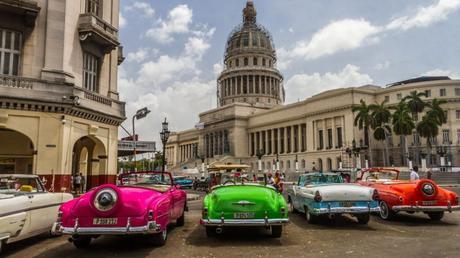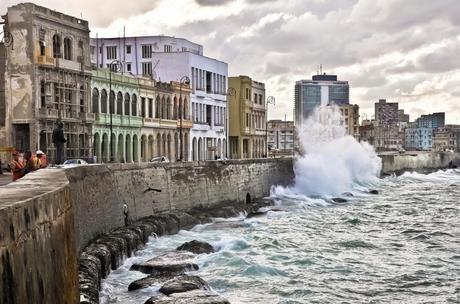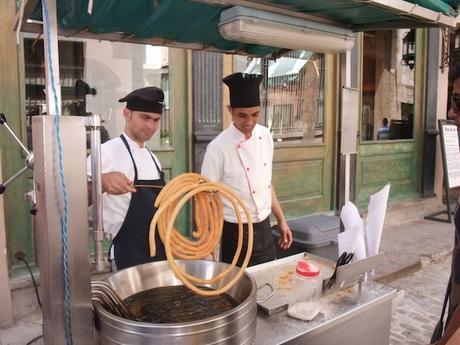
For the first time in decades, U.S. citizens can now travel to Cuba for vacation and tourism. However, given the country's long history of embargo with its southern neighbor, it's not as easy as booking a ticket and hopping on the next flight to Havana. There are still certain restrictions and bureaucratic hoops that you'll have to navigate before you get there. And, once you're standing on Cuban soil among some of the first waves of American tourists to see the island in over 50 years, you'll encounter a whole new world of experiences unlike anything in the United States.
So, what is it like there? We spoke with expert travelers to get their insights and advice from their recent trips to Cuba. If you're planning a trip in the next few months - especially if you're a U.S. citizen - review these tips before packing your bags.
Now Is the Perfect Time to GoU.S. relations with Cuba are good now, but evolving. The trade and tourism embargo that started in the 1960s was relaxed by President Obama's executive order this year. However, with the death of Fidel Castro, the current regime is in flux. Additionally, recent statements from president-elect Donald Trump imply that he may reverse that historic reconciliation with Cuba if the Cuban government doesn't meet certain demands related to human rights and political freedoms.
In short, if you want to go, now is the perfect time to make the trip. It may be one of your best chances to see Cuba in the near future without the fear that your vacation plan will be ruined by international political strife.
You'll Need a Visa to Enter the CountryIn order to travel to Cuba as a U.S. citizen, you'll not only need your passport but a visa as well. One of the easiest ways to get a visa is to book your trip through a tour company that will help you plan your itinerary from start to finish, including helping you sort out the necessary paperwork.
"It was actually quite easy to get a visa since our tour company handled all of the logistics," said Jared Alster of Stride Travel. "It's probably the best way to go, too, since the tourism infrastructure is still developing."
If you do decide to book your travel on your own, you'll need to prove that you're traveling under one of the 12 categories approved by the U.S. government in order to procure a visa. Pure tourism, like sitting on a beach for a week, is still technically prohibited. Any one of the following reasons for visiting will get you the visa approval you need:
- Family visits
- Official business of the U.S. government, foreign governments, and certain intergovernmental organization
- Journalistic activity
- Professional research and professional meetings
- Educational activities
- Religious activities
- Public performances, clinics, workshops, athletic and other competitions, and exhibitions
- Support for the Cuban people
- Humanitarian projects
- Activities of private foundations or research or educational institutes
- Exportation, importation, or transmission of information or information materials
- Certain export transactions that may be considered for authorization under existing regulations and guidelines
Our experts found that the hurdle for getting a Cuban visa was actually pretty easy to clear. Most people find it "easiest" to travel under the family visit, journalistic activity, or education activity categories. You'll need a copy of your passp
ort, which must be valid for at least six months after your departure date from Cuba. Typical visas for leisure and recreational purposes will be vali

"If you book directly, your airline will provide a link to the website where you can order a visa online," said Cheryl MacDonald of What Boundaries Travel Media. "It was no trouble at all and cost us about $75." You can also buy your Cuban visa in person at the airline ticket counter.
Don't Forget Your Travel Health InsuranceIn addition to your passport and visa, medical insurance is required when traveling to Cuba, and you may be asked to show proof of it when entering the country. This rule applies to anyone visiting from overseas as well as Cuban citizens living abroad.
There's a reason for the requirement. The Cuban government wants to ensure that anyone on holiday have adequate travel medical coverage prior to arriving on the island. The Cuban authorities will not allow anyone with outstanding medical bills to leave the country. Your travel medical insurance must include coverage for medical evacuation by air, medical emergencies and repatriation.
If you arrive in Cuba without travel health insurance, or with an invalid travel medical plan, will be able to buy a policy from a Cuban insurance company at the airport, port, or marina where they enter the country. However, as you might imagine, it's better to have all of your requirements covered before leaving for your trip.
If you do get sick while in Cuba, rest assured that the country has an excellent healthcare system. Healthcare is considered a basic human right according to the Cuban constitution, so the government has invested a significant amount of time and money in medical education. And while the country is poor and spends only $813 per person annually on medical care (compared to the $9,403 the United States spends), life expectancies in Cuba are the same as they are in the United States.
Cuba has more doctors per capita than the United States, so travelers will be in good care should something go wrong. But of course, bring any medications with you that you regularly take.
However, because of the embargo with the United States, the medical infrastructure is not the same as it is in the United States. Modern equipment such as MRIs and CT scans are not available in every hospital, which is why travel health insurance is so important. If you have a serious problem while in Cuba, your best option is to return home as soon as possible, even if that means cutting your trip short or - in a worst case scenario - being evacuated.
Bring Cash Since Credit Cards Are Unreliable
Cash is king in Cuba. While there have been some inroads made by Visa, Mastercard and smaller U.S.-based banks, using a credit card in Cuba is not a viable option - especially for U.S travelers. You also should not count on being able to withdraw cash from an ATM using a debit card.
In general, only major hotels accept credit cards, so even if you have a non-
U.S. based credit card there aren't many places to use them. Most local stores and shops don't accept credit cards, and even if they do, the connectivity needed to communicate with your banking institution is unreliable.
There are two types of Cuban cash: Cuban Convertible Currency (CUC) and the Cuban Peso (CUP). As a tourist, you'll be using the CUC. While the exchange rate between the U.S. dollar and Cuban Convertible Currency is currently 1:1, do not make the exchange while in Cuba. There is a 10% tax levied on the exchange. The better approach is to exchange U.S. dollars for euros while in the United States, and then exchange the euros for CUC once you reach Cuba.
Some of our veteran Cuban visitors report that you can use U.S. dollars and Euros on the street in Cuba without exchanging them, but with a caveat: Cubans are particular about what types of US currency they accept. For example, if a bill is damaged or torn in any way, many merchants will reject it. Bring crisp, new $50 or $100 bills.
Where to Stay and Where to Go
"I stayed in hotels and lodges in all of the cities I visited - Havana, Trinidad and Playa del Largo," said Jared Alster. "I stayed at Hotel Inglaterra in Havana, which is in a great location. The lobby was ornate and beautiful, but the rooms were quite basic. In our hotel in Playa del Largo, we had to switch rooms twice due to lack of running water."
Lucy Ballantyne of Lion & Lamb Communications, recently visited Cuba and shared her favorite places to visit in and around Havana:
- El Malecon: A broad esplanade, roadway and seawall that stretches for 8 kilometers along the coast in Havana, Cuba. It starts at the mouth of Havana Harbor in Old Havana, along the north side of the Centro Habana neighborhood, ending in the Vedado neighborhood. Locals meet up and celebrate at certain points along the stretch, which is designed to keep the waves from destroying the city.
- Fábrica de Arte Cubano: The Cuban Art Factory, where the artists meet the public. Combining art, music and nightlife, the project is the brainchild of internationally renowned Cuban musician X Alfonso. It's supported by the Ministry of Culture and the Institute of Music.
- Plaza de San Francisco: The town square in Old Havana with the basilica and the monastery of San Francisco de Asis. Make sure you pay the two CUC to climb to the top for a great view of the old city.
- Belle Artes (and the Cuban exhibition specifically): The National Museum of Fine Arts of Havana exhibits Cuban art collections from colonial times to the present.
- El Cañonazo: One of the city's oldest traditions is the firing of this cannon at 9 p.m. every night. Centuries ago this signaled the closing of the city gates at the end of the day.
- Hotel Nacional de Cuba: This hotel has hosted many notable guests such as Winston Churchill, Ernest Hemmingway, Ava Gardner, Marlon Brando, Alexander Flemming, Frank Sinatra, and many more. Hotel Nacional de Cuba houses the Cabaret Parisien, which hosts the "Cubano, Cubano" cabaret, tracing the fusion of Indoamerican, Hispanic, and African cultures that have given rise to Cuba's modern culture as we know it today.
- El Floridita: A legendary Havana bar, one of many regularly frequented by Ernest Hemmingway for daiquiris.
You'll find many fine restaurants throughout Havana and the larger cities worthy of exploring. About a decade ago, Castro allowed "private business" to emerge so many people opened family restaurants in old homes and buildings. You can find many hidden gems throughout the country - and it's a good idea to ask your hotel manager or host for their favorites.

If you're not ready to explore or want to ease into the culinary scene, hotels can be a good alternative. "Of course hotel restaurants are always available and dining is cheap: a lobster risotto with 3 lobster tails in Old Town Havana was $20 with wine," said Paul Eschenfelder of Embry-Riddle Aeronautical University.
And don't forget to try the seafood, which Lucy Ballantyne raves about. "The culinary scene in Cuba really impressed me with some of the most exquisite seafood dishes on offer," she said. "My favorite meal would have to be from the renowned La Guarida, where I had grilled prawns and chocolate fondue - the best I have ever experienced."
If you're ready to venture off the beaten path, you can't go wrong with trying the street food. Cubans have had to make do with very little, so you'll experience their creativity and ingenuity firsthand at a roadside food stall. You'll find many varieties of pork dishes and sandwiches, which are almost always accompanied by two Cuban staples: rice and beans.
One word of caution, however. Do not drink the tap water in Cuba. It's a good idea to use bottled water when you brush your teeth, and avoid getting water in your mouth when you shower or bathe.
Staying Active and Fit While You're ThereHavana and the other major cities in Cuba are very walkable, so you'll get a good amount of exercise as you explore and sightsee. If you're looking to ramp up your activity level even more while you're there, you'll have a variety of options.
Cuba has many national parks that are relatively empty, since most Cubans can't afford to travel to them and tourists stick to the city centers. If you want to explore the natural surroundings in relative solitude, try hiking through one of these natural wonders. Jared Alstel suggests Topes de Collantes near Trinidad. "I saw a beautiful waterfall, went for a swim, and then ended up at a simple restaurant in the park for lunch," he said.
If you're looking for an adventure at sea, Cuba is also well known for its spectacular scuba diving sites. In particular Jardines de la Reina (Gardens of the Queen) is a mangrove archipelago of hundreds of islands and a reef that has some of the best underwater conditions in the Caribbean. "Up to 20 different species of Caribbean reef sharks can be seen in a single dive," said Sandro Lonardi of Diviac Travel. "The reef is healthy and untouched, and you can even snorkel with crocodiles."
If dry land and a slightly slower pace are a better fit for your lifestyle, Cuba also has two golf courses available (three if you count the course at Guantanamo Bay that's available only for the U.S. military). The Varadero Golf Club hosts and 18-hole course outside of Havana on a narrow 3.5 kilometer strip of beach near the major hotels east of Havana. There's also the smaller 9-hole course of the Havana Golf Club, south of Havana. Most Cubans don't golf because it's expensive, so you'll have the courses mostly to yourself if you decide to tee up.
What You Can Bring BackThe U.S. government will allow you to bring back $400 worth of souvenirs, and cigars can make up only $100 worth of that total. Don't take chances with the imposed limits either, since fines are hefty. Break the law and you could be facing a $250,000 fine and 10 years in prison - so don't risk it.
However, there is no limit to the amount of memories and stories you can bring home with you. So plan the trip of a lifetime and - with the help of these tips - enjoy a safe, happy and unforgettable visit to Cuba.

